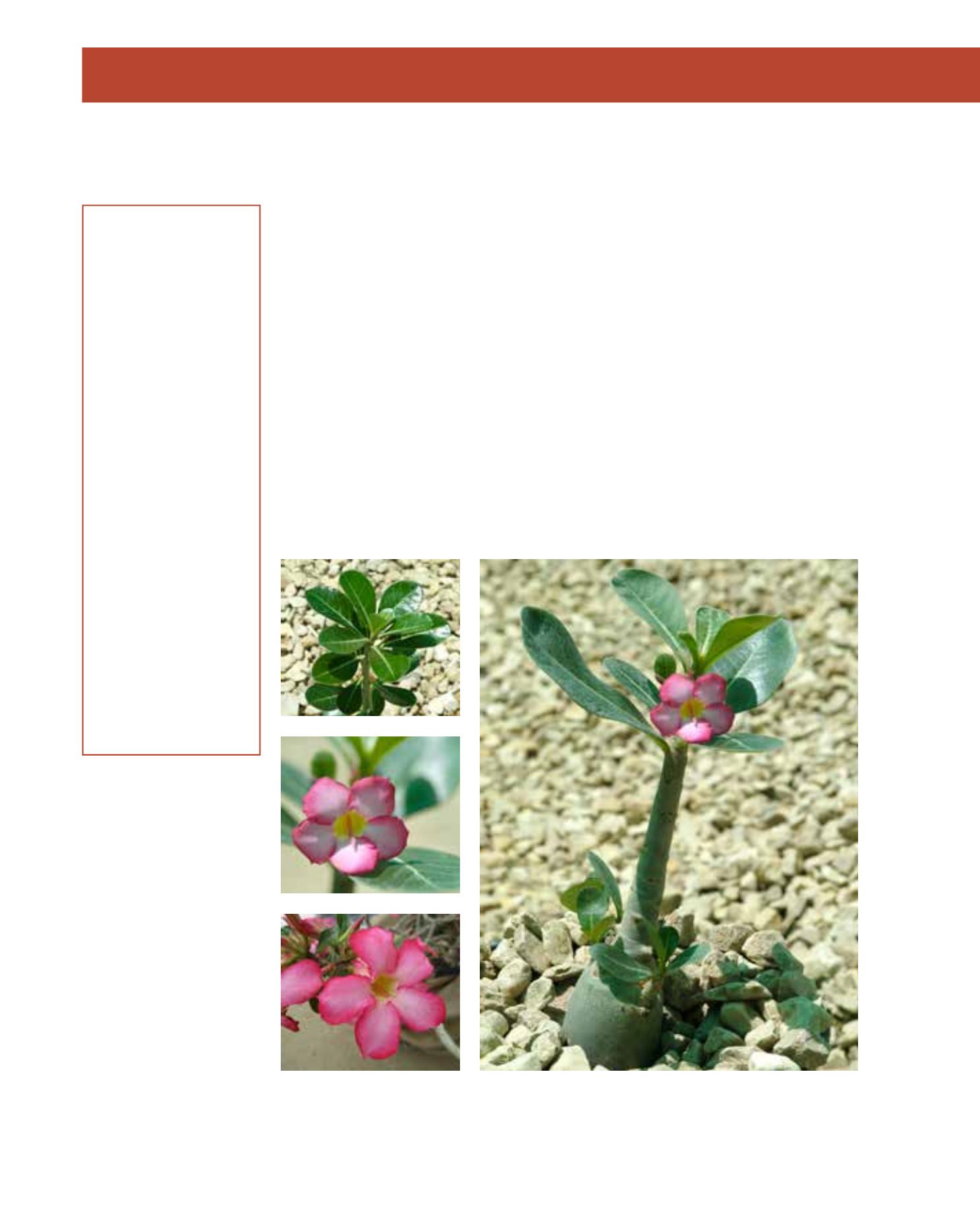

GENERAL
Origin
:
sub-tropical,
tropical
Humidity
:
very arid, semi-
arid
Propagation :
sowing and
pricking out,
grafting
Maintenance :
moderate
CONDITIONS
Urban climate :
vulnerable
Dessication :
resistant
Stagnant water :
vulnerable
Irrigation
:
low
Salinity/ppm :
moderate (2000
ppm)
Hardiness
:
0°C
SHAPE
Type
:
shrub
Height
:
1 m-6 m
Spread
:
1 m-2 m
Foliage
:
semi-evergreen
FLOWER
Colour
:
deep pink,
secondary: deep
white
Size
:
5 cm
Period
:
April - July
FRUIT
Type of fruit :
capsule
Fruit size
:
20 cm
Toxicity
:
highly poisonous
Desert Roses, or adanah in Arabic, are succulent shrubs with irregular shapes, native to
northeastern Africa and Arabia. Their fleshy trunks may be buried half or entirely in the soil.
They grow slowly to several metres in height with large caudexes. Twisted branches are sparsely
covered with obovate, shiny leaves that are up to 8 cm long. They are semi-evergreen and retained
in warm conditions. In Arriyadh, they usually undergo dormancy and drop their leaves in winter.
Irrigation should be reduced at this time. Most showy are the stellate flowers in shades of pink
and magenta with white throats and a diameter of 5 to 7 cm. They appear in dense clusters in
spring until temperature exceeds 40°C. Desert Roses do excellently as indoor or container plants
when they receive enough sun and not too much watering. Cuttings root easily, but do not
develop the typical fat, bottle-like trunks. Young plants already produce flowers after one year. In
rock gardens, Adenium takes full sun and thrives on heat. Pruning usually does not improve the
plant’s appearance. If cuts are necessary, they should be done only during the dormancy in winter
when the flow of sap is low. The sap is poisonous and is sometimes used on arrows for hunting big
game. Decoctions are medically used to treat eczemas and infected wounds. Cultivars also show
flowers in deep-red or white. Adenium obesum is the most attractive of twelve species; some are
considered subspecies.
39
Adenium obesum,
Apocynaceae
Desert Rose,
adanah, seyfid
















